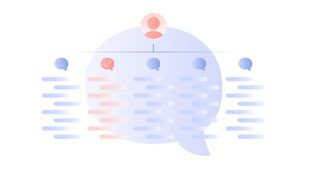In my first blog in this three-part series, “Agentic AI and the IT Balancing Act: Saving Costs While Prioritizing People,” we explored how agentic AI can reduce the operational burden so people can focus on higher-value work. Bottom line, it’s no longer about if it’s time to start—it’s about where. With that mandate established, let’s talk about how to get buy-in, align stakeholders, and demonstrate real value quickly.
By now, most organizations understand the basic requirements for implementing AI effectively:
- Identify strong use cases
- Clean and govern your data
- Prepare your architecture and teams
- Pilot, measure, and iterate
While there’s basic agreement on these principles, progress often stalls when it comes to budgeting, business priorities, and gaining that all-important executive sponsorship to make it a reality. That’s why it’s important to choose the right starting point—an agentic AI use case that solves a real pain point and is easily scalable.
Enterprise search: Universally terrible, universally felt
First, think of a function that team members need to use every day—everyone agrees it should work but doesn’t, and it ends up being a frustrating, time-consuming black hole for every employee in the company. If you said “finding things” you’re not alone. As everyday Internet search engines have evolved and adopted agentic AI features like that handy Google AI summary, work-related portals and search have lagged far behind.
Adobe research found that 48 percent of users can’t find the document they need in their company’s digital organization systems. And there’s a reason for that. Enterprise search is outdated, ineffective, and siloed to individual libraries, with results that are often irrelevant—it can even return multiple, mixed, and variable answers for the same query.
Case in point: Need to change your pay withholding amounts? First you might search the intranet. Then the HR system. Finally, you just file a ticket for the HR team with your question.
Personalization is essentially non-existent, there’s no context, and at the end of the day, the portals and search are more of a hindrance than the helpers they were intended to be. If anything, it’s one more barrier to doing work, with quantifiable, everyday consequences like lost productivity from switching back and forth between tools, increased ticket volume, and manual escalations because users can’t find what they need. And IT often falls victim to “shoot the messenger” user dissatisfaction. Again, super frustrating. And the perfect scenario for blank-slate thinking.
Enter agentic AI.
Turn a foe to a friend
Agentic AI can make search what it was always intended to be—a fast, efficient, intuitive experience that actively supports users, allowing them to ask specific questions like, “How do I access XYZ?” or “Why is ABC application down?” It also delivers:
- Role-aware, task-specific answers—not just documents—from a universal search that’s accessible by every user
- Cross-system retrieval responses from siloed data
- Plain English conversations that reduce clicks and cognitive load
- The ability to escalate, submit requests, or complete tasks
- Predictive learning based on historical queries
The proof is in the pudding
These aren’t incremental improvements—they’re part of a bigger package. Agentic AI can redefine the search experience for end users, offer tangible benefits for the business, and restore trust in IT. That’s a successful AI strategy in practical terms. Here’s a quick snapshot:
- Low lift, high reward: There’s no need to replace your systems, just augment them.
- Quick wins: It’s easy to measure and easy to feel—especially for business users and executives.
- Broad impact: Search touches every function and persona.
- Builds confidence: Success here earns internal support for future AI rollouts.
The best UI is no UI
You don’t need to overhaul your IT estate—you just need light capabilities to make it work better. While some AI platforms add AI features behind heavy pricing, locked data, and rigid models, new agentic AI approaches are modular and predictable. They let all users find what they need with simple agents, right where they are. Users can search multiple libraries and systems from the tool they’re already working in (e.g., Teams or Slack), maximizing the value of solutions across the tech estate you’re already paying for.
Bonus: The best providers support your long-term vision. You get a path to consolidating tool sprawl, and you can secure your data without surrendering control over it.
Start small, prove it, expand naturally
To sum it up, you don’t need a huge project to make a big impression. Start with the user pain point that hurts the most, successfully solve it, then scale with confidence. Fixing the enterprise search dilemma proves value, earns trust, and accelerates transformation. Leadership will want more agentic AI solutions—and they’ll trust the team that delivered it, opening doors to broader use cases like knowledge agents, self-service automation, and AIOps advancements.
Have another use case you’d like to explore? Let us know, or request a demo to see some of our agents in action.







